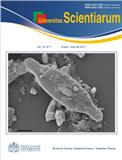Abstract
Objective. Population assessment of Milvago chimachima (Falconidae), commonly known in Spanish as pigua, is a raptor species occurring in the urban area of Sincelejo, department of Sucre, Colombia. Materials and methods. Population density was calculated using a line transect. Knowledge on feeding and reproductive behavior was based on fixed-point observations. The home range of the species in the study area was estimated using parallel line transects after marking three individuals. Results. The obtained density was 4.9 individuals/Km2 and the home range was between 1.43 and 1.88 Km2/individual. Conclusions. The availability of preys like rats and mice, as well as carrion and organic waste of the city can influence the presence of the bird, although its density is comparatively low.
Key words: abundance, Colombia, density, home range, Milvago chimachima, Sincelejo, urban area.
Univ. Sci. is registered under a Creative Commons Attribution 4.0 International Public License. Thus, this work may be reproduced, distributed, and publicly shared in digital format, as long as the names of the authors and Pontificia Universidad Javeriana are acknowledged. Others are allowed to quote, adapt, transform, auto-archive, republish, and create based on this material, for any purpose (even commercial ones), provided the authorship is duly acknowledged, a link to the original work is provided, and it is specified if changes have been made. Pontificia Universidad Javeriana does not hold the rights of published works and the authors are solely responsible for the contents of their works; they keep the moral, intellectual, privacy, and publicity rights. Approving the intervention of the work (review, copy-editing, translation, layout) and the following outreach, are granted through an use license and not through an assignment of rights. This means the journal and Pontificia Universidad Javeriana cannot be held responsible for any ethical malpractice by the authors. As a consequence of the protection granted by the use license, the journal is not required to publish recantations or modify information already published, unless the errata stems from the editorial management process. Publishing contents in this journal does not generate royalties for contributors.



